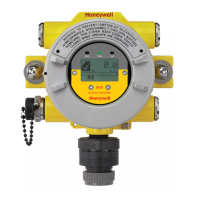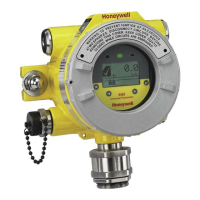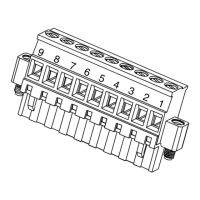XNX Universal Transmitter
Introduction
11
Product Description
The Transmitter
The transmitter is a comprehensive gas detection system
designed to operate in hazardous locations
1
and utilize multiple
sensor technologies –catalytic bead, electrochemical (EC),
or infrared (IR)– to detect toxic gases, ammable gases, and
oxygen depletion gas hazards. Each technology has a dedicated
personality board.
Catalytic bead technology is used with the mV personality
board. Catalytic bead sensors respond to a wide variety of
combustibles so are typically used for ammable gas detection.
Electrochemical technology is used with the electrochemical
board. EC sensors measure toxic gases in low concentrations.
The EC sensors employ the patented Reex™ cell fault
diagnosis routine. Reex checks for cell presence, cell dry-out,
and cell open or short circuit. Reex is automatically initiated
by the transmitter at eight-hour intervals. It is also initiated on
power up or sensor exchange. In the event of a cell failing this
test, a sensor fault code is displayed. Reex diagnostics occur in
the rst minutes of the power up sequence.
Infrared technology is used with the IR board. IR sensors
optically absorb gases that fall into the infrared spectrum.
For additional information about any of these sensor types, refer
to the applicable data sheet for the supported sensor in Figure 1.
The transmitter also allows for an optional communication
board. There are three types of boards: relay, Modbus
®
, or
1
There are three main types of gas hazards: ammable, toxic, and asphyxiant. A am-
mable gas hazard is one in which there is a risk of re and/or explosion (e.g., a situation
in which a gas such as methane, butane, or propane is present). A toxic gas hazard is
one in which there is a risk of poisoning (e.g., a gas such as carbon monoxide, hydrogen
sulde, or chlorine is present). An asphyxiant hazard would include a risk of suffocation
through oxygen deciency. (Oxygen can be consumed or displaced by another gas.)
FOUNDATION
TM
Fieldbus. See the Communications section for
additional information.
.
705
705HT
Sensepoint
Sensepoint HT
XNX Universal Transmitter
Multi-Purpose
Detector (MPD)
Catalytic Bead
Infrared Flammable
Infrared Methane/CO
2
Personality Sensor Type Supported Sensors
IR Point and Open-Path Infrared Searchpoint Optima Plus, Searchline Excel
mV Flammable and Toxic
705, 705HT, Sensepoint, Sensepoint HT, MPD
(Catalytic Bead Flammable, IR Flammable and IR CO
2
)
XNX EC Toxic and O
2
Sensing
Electrochemical sensors, with Hot Swap, pre-calibrated
through Intrinsically Safe (IS) barrier
r
onal
t
enso
u
ted
ens
Searchline Excel
Searchpoint Optima Plus
CI
2
CIO
2
CO
F
2
H
2
H
2
S
HF
HCN
NH
3
HCI
NO
NO
2
EtO
O
2
PH
3
SO
2
O
3
Figure 1. XNX Universal Transmitter and supported sensing technologies
The transmitter relies on 4-20mA output, refreshed at least every
two seconds (once per second is typical), in which the output is
proportional to the gas concentration.

